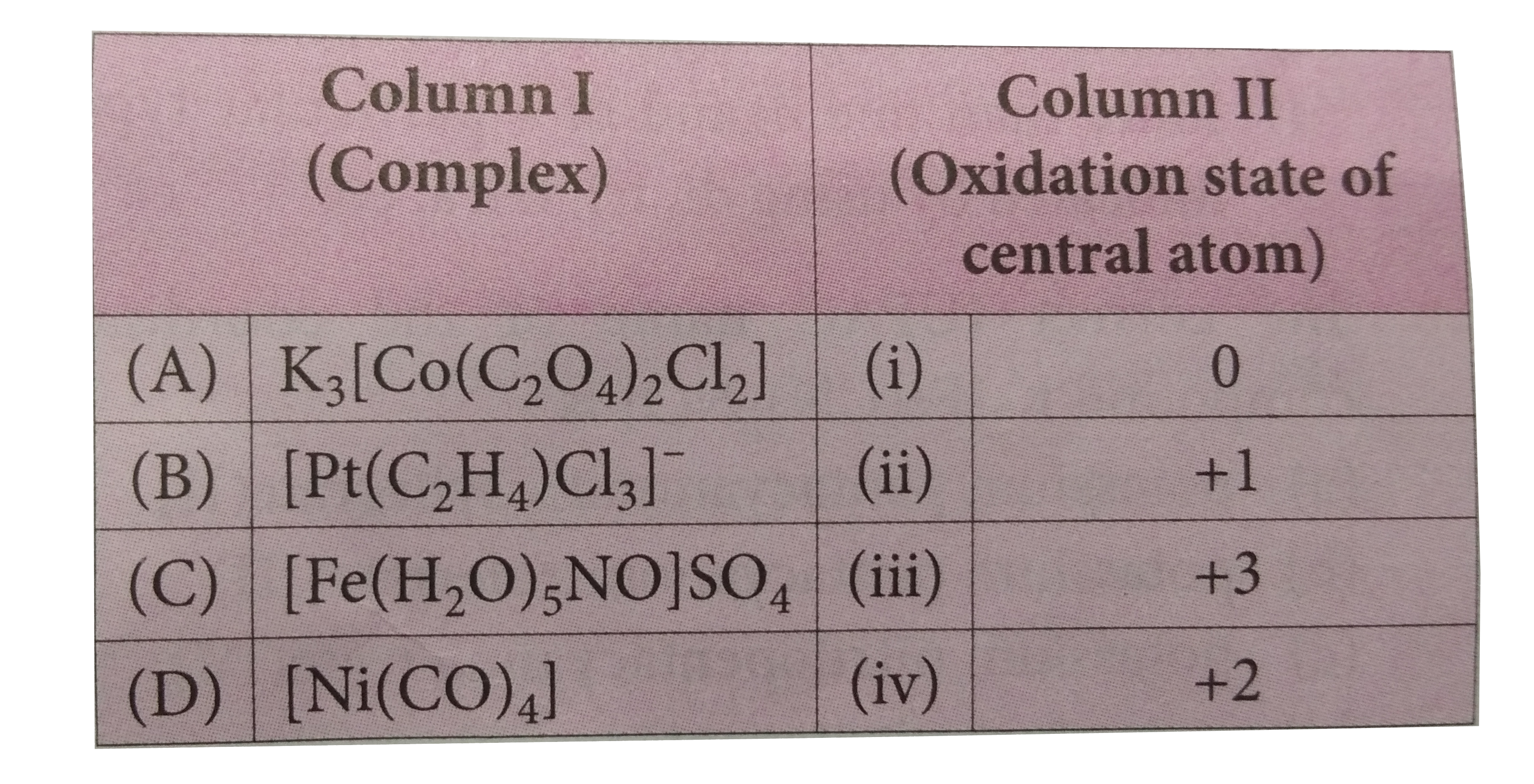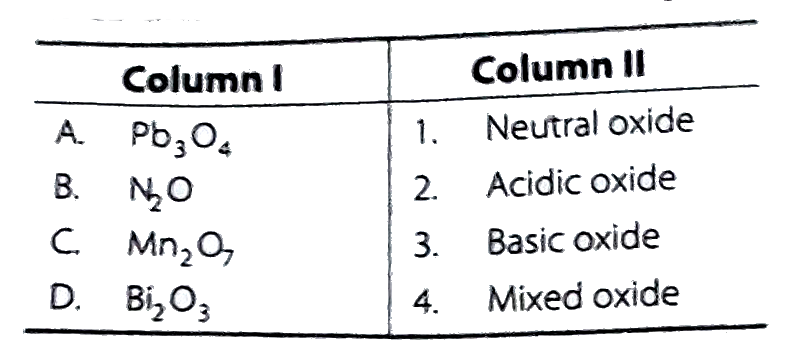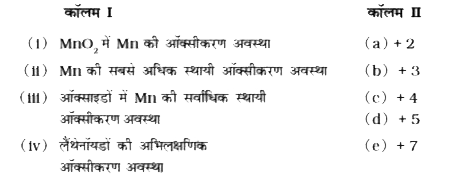Match the formulas of oxides given in Column-I with the type of oxide given in Column-II and mark the correct option.
 Solution in Gujrati
Solution in Gujrati
A-(1), B-(2), C-(3), D-(4)
A-(4), B-(1), C-(2), D-(3)
A-(4),B-(2), C-(4), D-(1)
A-(4), B-(3) , C-(1), D-(2)
The correct Answer is:b
Step by step video, text & image solution for Match the formulas of oxides given in Column-I with the type of oxide given in Column-II and mark the correct option. by Chemistry experts to help you in doubts & scoring excellent marks in Class 12 exams.
Updated on:21/07/2023Topper's Solved these Questions
- THE P-BLOCK ELEMENTS BOOK - KUMAR PRAKASHANCHAPTER - THE P-BLOCK ELEMENTS EXERCISE - SECTION -D (NCERT EXEMPLAR SOLUTION)(ASSERTION AND REASON TYPE)
6 Videos
- THE P-BLOCK ELEMENTS BOOK - KUMAR PRAKASHANCHAPTER - THE P-BLOCK ELEMENTS EXERCISE - SECTION -D (NCERT EXEMPLAR SOLUTION)(LONG ANSWER TYPE QUESTIONS)
3 Videos
- THE P-BLOCK ELEMENTS BOOK - KUMAR PRAKASHANCHAPTER - THE P-BLOCK ELEMENTS EXERCISE - SECTION -D (NCERT EXEMPLAR SOLUTION) (SHORT ANSWER TYPE QUESTIONS)
21 Videos
- THE D-AND F-BLOCK ELMENTSBOOK - KUMAR PRAKASHANCHAPTER - THE D-AND F-BLOCK ELMENTSEXERCISE - Section -E MCQs asked in GUJCET/Board Exams)
50 Videos
- THE SOLID STATEBOOK - KUMAR PRAKASHANCHAPTER - THE SOLID STATEEXERCISE - SECTION - E (MULTIPLE CHOICE QUESTIONS)(MCQs ASKED IN BOARD EXAMS)
35 Videos
Similar Questions
Assertion : N2 is less reactive than P4.
Reason : Nitrogen has more electron gain enthalpy than phosphorus.
View SolutionAn amorphous solid "A" burns in air to form a gas "B" which turns lime water milky. The gas is also produced as a by-product during roasting of sulphide ore. This gas decolourises acidified aqueous KMnO4 solution and reduces Fe3+ to Fe2+ Identify the solid "A" and the gas "B" and write the reactions involved.
View SolutionIn the preparation of H2SO4 by Contact Process, why is SO3 not absorbed directly in water to form H2SO4 ?
View SolutionWhy 21Sc is not considered as transition element?
View SolutionWhich of the following solids has highest conductivity of heat and electricity ?
View SolutionMatch the statements given in Column I with the oxidation states given in Column II.

View SolutionMatch the formulas of oxides given in Column I with the type of oxide given in Column II and mark the correct option.
View SolutionMatch the formulas of oxides given in Column I with the type of oxides given in Column II and mark the correct option.
View SolutionMatch the complexes given in column I with the oxidation states of central metal atoms given in column II and mark the appropriate choice .

View SolutionMatch the type of fruits given in Column I with the examples given in Column II. Match the two columns and select the correct option.
View SolutionMatch the statements given in Column I with the oxidation states given in Column II.
View SolutionMatch the formulas of oxides given in Column I with the type of oxide given in Column II and mark the correct option.

View SolutionMatch the complexes given in column I with the oxidation states of central metal atoms given in column II and mark the appropriate choice .
View Solutionकॉलम I में दिए गए ऑक्साइडों के सूत्रों को कॉलम II में दिए गए ऑक्साइडों के प्रकारों से सुमेलित कीजिए और निम्नलिखित कोडों में से सही कोड का चयन कीजिए।
 br>
br> 
View Solutionकॉलम I में दिय गए कथनो को कॉलम II में दी गई ऑक्सीकरण अवस्थाओं से सुमेलित कीजिए।

View Solution
